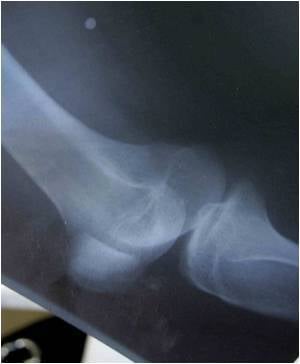
Dermatomyositis is often accompanied by a purple or red skin rash. In some patients the standard treatment for dermatomyositis is prednisone, but despite steroid therapy many patients continue to experience disabling weakness and have the added unpleasant side affects associated with the steroids. Prior studies suggest that tumor necrosis factor (TNF) may play a role in the development of dermatomyositis. TNF—a type of protein molecule involved in systemic inflammation—is associated with other inflammatory diseases including rheumatoid arthritis, ankylosing spondylitits, and psoriatic arthritis, all of which seem to be responsive to etanercept therapy in studies.
"Given the positive response of other inflammatory diseases to etanercept, our pilot study aimed to assess the safety and tolerability of this drug in dermatomyositis, along with the feasibility of a forced prednisone taper," said Anthony Amato, MD, with the Department of Neurology at Brigham and Women's Hospital and Harvard Medical School in Boston, Massachusetts. Researchers conducted a double-blind, placebo-controlled trial of etanercept (50 mg weekly) in16 patients with dermatomyositis. The year-long trial randomized 11 participants to etanercept and 5 to placebo, with subjects tapered off prednisone in a standardized schedule over the first 24 weeks of the study.
Trial results revealed no significant increase in adverse event rates in the treatment group compared to placebo. Of the 11 subjects treated with etanercept, 5 were successfully tapered from steroid therapy, with a median time to treatment failure (inability to wean off prednisone on schedule) in this group of 358 days. All placebo subjects were treatment failures with a median of 148 days to failure of treatment. Researchers reported that 5 etanercept-treated participants and 1 placebo-treated participant developed a worsening rash. After week 24 the median of the average prednisone dosage was 29.2 mg/day in the placebo group and 1.2 mg/day in the etanercept cohort.
Additionally, two etanercept-treated participants developed elevated anti-nuclear antibodies during the study, but none developed systemic lupus erythematosus. The authors noted that the small sample size and allowance of rescue treatment in this trial limit conclusions of etanercept efficacy to those related to steroid-sparing. "Etanercept was safe and well-tolerated in participants in our one-year study," concluded Dr. Amato. "Further study of the safety and efficacy of etanercept as a dermatomyositis treatment is warranted."
Source-Eurekalert











